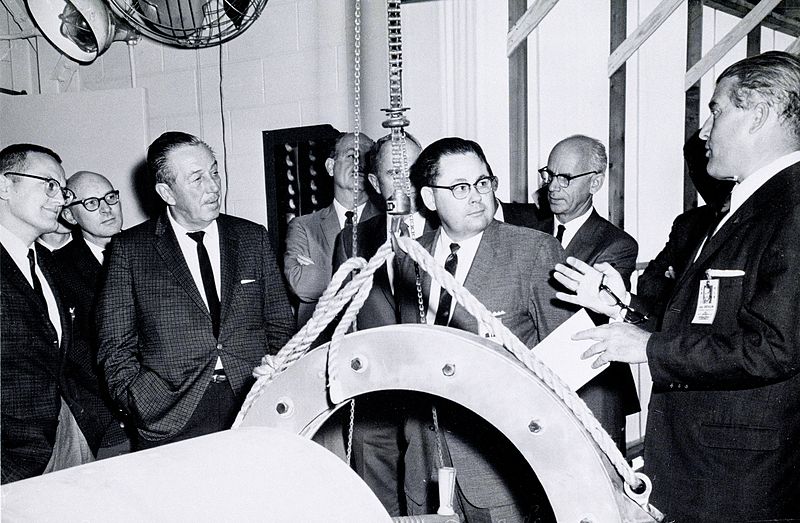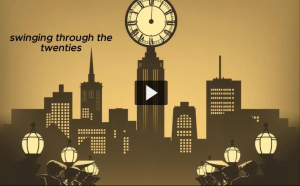Families throughout the United States faced hard times during the late-1930s. People were still recovering from the effects of the Great Depression, unfulfilled promises from President Roosevelt’s New Deal, and unemployment.1 During these financially troubled times, two dreamers, brothers Roy and Walt Disney, were on a mission to continue to produce quality animation on a fixed budget. After Fantasia‘s disappointing initial grossing, Disney Animation Studios’ debt was edging toward $3 million, which led to Walt Disney cutting all of his animators’ salaries. Although Roy Disney believed that this would undermine everything the two had built, he realized the only alternative was to sell their films through a franchise or file for bankruptcy, and so he agreed to the arrangement, unaware of the wrath that would follow.2

Tensions rose as animators also noticed a change in Walt Disney’s attitude toward them. The once cheerful man who was full of magic soon lost that touch, becoming distant to the people around him. Walt began to take all the credit for the animations that were being produced, and his employees soon realized that their pay was much lower than Disney’s salary. His ‘in-betweeners’ and clean up men were making $20 at the most, while his animators, ranging from amateurs to professionals, made between $75 and $300 weekly. Walt brought home a salary five times what his highest paid animators were bringing home.3
These pay disparities led his beloved animators to walk out on the company. On May 28, 1941, employees were greeted by hundreds of their coworkers waving signs preventing them from entering the studio. Although the exact number of employees who went on strike differs between sources, it is estimated that roughly one-third of the 1200 employees went out that morning. For the first few days of the strike, employees exchanged jokes and banter. The animators held up picket signs with clever illustrations that depicted their true emotions. One that struck deep to the studio was a picture of Walt Disney’s face in a cartoon style with crossed eyes and the caption “I can’t see why they’re unhappy.”4 Walt refused to give in to the demands of his employees, because he did not feel that they needed the increase in pay. This firm stance left the strike to go on for five whole weeks, tearing apart the company’s unity. This tension led Walt to leave for South America to take some time away from work, while he let go almost half of his team. After a bank representative for the company stepped in to review the case, the studio was sustained in favor of the animators leading to the dispute being settled. Though a treacherous three and a half months had passed, work finally resumed at the studio in Burbank, California with 694 employees on September 16, 1941.5

Just as everything seemed to be falling into place, the unimaginable happened. On December 7, 1941, the Japanese Navy Air service struck down on the United States naval base in Pearl Harbor sending the United States into World War II. Panic set in for the animators again as the cost of the films being produced during this time put a damper on the company’s overall budget.6 During this time, Walt and his company were sought out to produce cartoons for the armed services as morale builders. They also used half of the animation studio to house antiaircraft troops that were fighting during World War II. Although the company seemed to be taking on too much, this engagement would inspire Walt to create a few propaganda short films and war posters of his own that would speak to the people of the United States. Of all of the animation produced during the war, the most notable piece was Der Fuehrer’s Face, an animated short film in which Donald Duck dreams he is working in a German factory, all while ridiculing Adolf Hitler. The combination of housing troops in the studio, producing short films that expressed the idea of America’s freedom, and the efforts to inspire those fighting for the United States broaden the brand as a whole, showing every single American know what the Disney company stood for at the time.7
Though Walt himself did not find very creative success regarding his work toward the government propaganda animation and posters, it paid off very well for the company, raising its reputation and generating profits. The animation studio’s contributions to America during the World War II brought smiles with their comedic satire to families struggling to find hope as their loved were out serving their country. Soon after, they produced notable works such as Bambi (1942), Song of the South (1946), and Cinderella (1950), with Cinderella generating enough gross profit to pull the company out of debt and further establish their brand. Had both the strike and Walt lending a hand during the war not happened to the Walt Disney Animation Studios, Walt and Roy Disney may not have been able to sufficiently pay their ‘on the edge of leaving the company’ employers and the bills that came with owning the animation studio. The studio itself could have shut down permanently, never transforming from two passionate brothers’ project to a multi-billion dollar brand that brings magic fans and families all across the globe.
- The Hutchinson Unabridged Encyclopedia with Atlas and Weather Guide, 2018, s.v. “The USA in the 1930s.” ↵
- Neal Gabler, Walt Disney: The Triumph of the American Imagination (New York: Knopf, 2006), 350-351. ↵
- Neal Gabler, Walt Disney: The Triumph of the American Imagination (New York: Knopf, 2006), 355. ↵
- Steven Watts, The Magic Kingdom: Walt Disney and the American Way of Life (Boston: Houghton Mifflin, 1997), 209 ↵
- Neal Gabler, Walt Disney: The Triumph of the American Imagination (New York: Knopf, 2006), 367-371 ↵
- Barry Keith Grant, “Walt Disney Company,” Schirmer Encyclopedia of Film, Vol. 4, (New York: Schirmer Reference, 2007), 331-336. ↵
- Paul Lagasse, “Walt Disney,” The Columbia Encyclopedia, 8th ed. (Columbia: Columbia University Press, 2018) ↵



94 comments
Mia Morales
I was unware that Walt Disney participated in propaganda ads during World War II. This article was interesting to read about because ever since I was little I have been a fan of Disney and his work, it’s shocking to see more of the negative connotation around his name. However, everything does happen for a reason and if none of this had occurred we would not have the timeless classics that Disney has made since.
Ryan Estes
Just when you think you know a lot about World War II history, you learn something new. I never knew Walt Disney played a part in producing propaganda to boost soldier’s morale. I want to go watch Der Fuehrer’s Face to see some of the methods Walt used to ridicule Hitler. I’m glad the company survived, because I enjoyed watching movies like Snow White and Zootopia.
Antonio Coffee
I am a huge fan of Disney movies but I have never known a lot about the man that was Walt Disney. I had heard a lot of different things and I never heard anything about treating his employees as bad as this article mentions. I am happy that the strike and Disney’s involvement in the war happened the way they did because we might not otherwise have the great movies and theme parks that we do now.
Nathalie Figueroa Soto
Nowadays I consider myself a huge Disney fan, but even I can admit to not being made aware of any of these hardships at all. I did not know that Walt Disney was having trouble paying his employees, that there was a five week long strike held by said employees, or even that these were the reason that Disney had decided to make cartoons to boost morale during World War II. However, these things were what led Disney to becoming what it is now. It’s incredible how the company went from having over $3 million in debt to becoming the multi-billion dollar company it is in present time.
Alexandra Lopez
I think it is so fascinating that something so positive in our childhood we cannot consider it once had any negative problems. This article informed me information that I had never heard of but especially surprised me on Walt Disney’s outlook on his workers. The man that brought so much happiness into everyone’s homes that it is hard to believe that he did not want to pay his workers a fair salary. (reposted)
Micaela Cruz
I was not aware of all the issues Walt Disney and the animation studio had faced at one point in time. It’s crazy to think that there was a strong possibility of the animation studio along with Disney himself would fall into bankruptcy but I am glad to see how they managed to overcome the adversity thrown their way. What I also found interesting was Walt Disney’s brother having a role in this story and with the animation studio as well.
Donte Joseph
Before reading, the only obstacle I thought that Disney itself had was its discrepancy of who had rights to Walt Disney’s first character. I had no idea the other issues surrounding Disney was Walt Disney himself. Reading that Disney would manipulate his workers and treat them so harshly was very disheartening, but seeing it was during the time of war, I don’t think it is as bad as it could have been. Thankfully the animators protested for what they believed was right.
Madeline Torres
Such an interesting article with very informative details. I never knew Disney had that much trouble coming up to become what they became now. It wasn’t always magic and pixie dust and that is something I’m sure many didn’t know. I also didn’t know that World War 2 had such a positive impact on the company. Disney definitely had a tough upbringing and that is something this article made known.
Maggie Amador
I did not realize the obstacles animators faced with Disney during its early years. I think it is ironic how in the midst of the protest Walt could afford to take a vacation almost as if he was flaunting his wealth. This article did have a positive change as animators received fair pay and the impact Disney was able to have on the war is great.
Mia Stahl
It is an age old story of workers having to come together to demand better pay. In the same way it is not unheard of that CEOs and leaders of large companies are unwilling to give a fair wage to their employees simply because they feel they don’t need that much money for the work they are providing. This is often the opinion of large corporations because it saves them money and is in the interest of the company but only to the big dogs at the top of the whole operation.